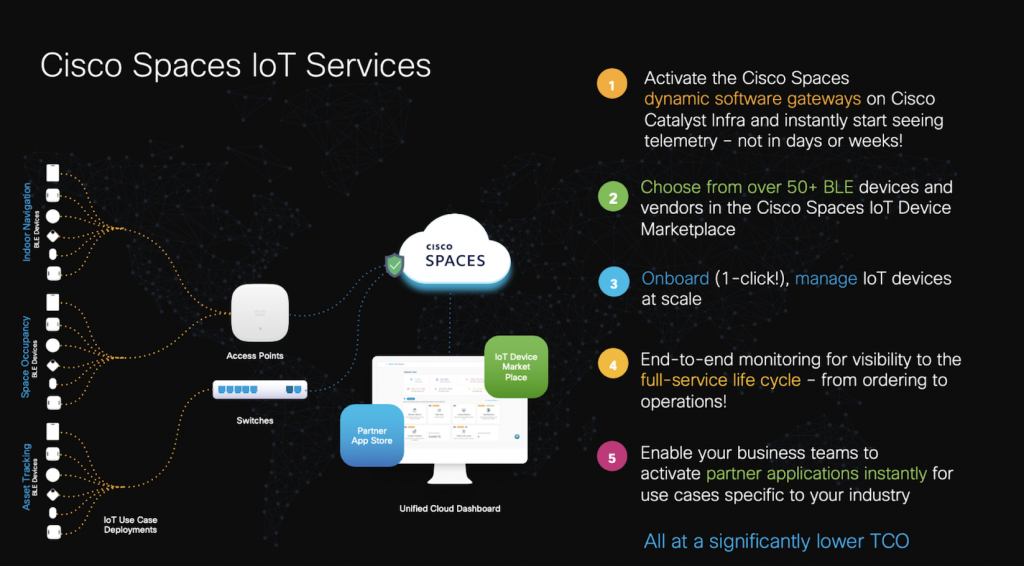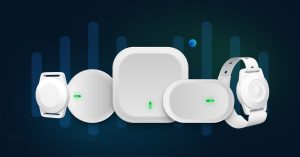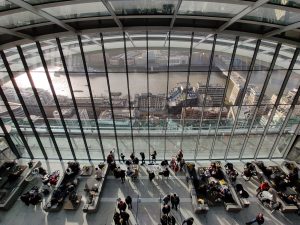
The use of IoT in the retail sector has grown exponentially in recent years. It has enabled retailers to better manage inventory levels, provide more accurate data on customer behavior and increase overall efficiency. Additionally, it has allowed them to offer a more personalized shopping experience by leveraging connected devices, such as sensors and cameras, to collect data for outcomes. This data can then be used to better understand customer preferences and create targeted promotions and product recommendations. IoT has also made it easier for retailers to track supply chains, streamline logistics operations and reduce costs associated with warehousing and shipping.
1. Asset Tracking & Management
Asset management in retail is an effective way to ensure resources are used optimally and efficiently. By tracking inventory levels, discounting items at the right time and planning for long-term investments, businesses can maximize the return on their assets. Additionally, having visibility into the supply chain can help retailers identify opportunities to reduce costs while ensuring customer satisfaction. By taking the time to develop an effective strategy, retailers can ensure that their assets are working for them and not against them. With the right tools and knowledge, asset management in retail can help businesses reach new heights.
2. Environmental Monitoring
Environmental monitoring solutions in the retail industry provide businesses with a way to ensure product safety and quality. Environment Sensors can detect temperature, humidity, CO2 levels, light levels and other conditions that could affect products. These solutions can help retailers maintain compliance with regulatory standards and prevent costly recalls due to contamination or spoilage. Additionally, environmental monitoring systems can reduce energy costs and help retailers become more sustainable by cutting back on excess resources. With real-time data and alerts, businesses can respond quickly to any changes or potential hazards in their environment. By leveraging the power of environmental monitoring, retailers are better equipped to maximize product safety and quality and create a healthier retail environment overall.
3. Space Occupancy
Space occupancy monitoring in retail helps retailers understand the customer experience in their stores. It provides valuable insights into traffic flow, customer engagement, store layout and more. With space occupancy data, retailers can measure how effectively customers are engaging with products and services, identify areas of congestion or under-utilized space, and adjust their strategies to optimize store performance. Space occupancy monitoring can also help retailers plan for future store expansion or remodeling. By understanding customer behavior in the current layout, retailers can make informed decisions about how to design and organize new spaces for maximum efficiency and engagement. Additionally, occupancy data from occupancy sensors can be used to optimize staffing levels, enhance customer service and provide targeted offers that are tailored to specific customers.
4. Indoor wayfinding
Indoor wayfinding offers numerous benefits, particularly for large stores and malls with a large volume of customers. It can help shoppers quickly locate items or services, reducing wait times and the risk of getting lost within the mall. Additionally, it can improve customer satisfaction by providing clear directions and allowing customers to easily navigate the store, reducing frustration. For retailers, a well-executed wayfinding system can also increase sales by providing proper access to products and services, and increasing customer engagement with the store.
Wayfinding can be implemented by deploying beacons to make it easier for customers to find what they’re looking for and direct them towards high-traffic areas. Wayfinding also provides retailers with access to valuable data such as customer flow patterns and customer journey analysis. This can help them understand consumer behavior as well as how to better optimize their layout for increased efficiency.
The right tools for retail IoT
Retail IoT is revolutionizing the retail industry. It enables better communication between retailers and customers, more efficient operations, and improved access to data-driven insights. However, for these benefits to be realized, it is essential that retailers have access to the right tools for implementing scalable IoT solutions. This means having a robust, secure IoT platform that can connect different devices from multiple vendors and manage and monitor these devices easily. Additionally, having an analytics solution allows retailers to monitor the performance of their systems in real-time and make changes as necessary.
This is where Cisco Spaces comes in. Cisco Spaces’ enterprise IoT solution for the Cisco Catalyst 9000 Wireless and Switching Family allows you to deploy indoor IoT applications rapidly, at scale and at a significantly lower TCO.

Learn more about Smart Retail by Cisco Spaces here



